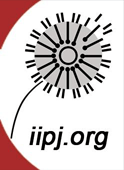Article Title
Indigenous Educational Attainment in Canada
Abstract
In this article, the educational attainment of Indigenous peoples of working age (25 to 64 years) in Canada is examined. This diverse population has typically had lower educational levels than the general population in Canada. Results indicate that, while on the positive side there are a greater number of highly educated Indigenous peoples, there is also a continuing gap between Indigenous and non-Indigenous peoples. Data also indicate that the proportion with less than high school education declined, which corresponds with a rise of those with a PSE; the reverse was true in 1996. Despite these gains, however, the large and increasing absolute numbers of those without a high school education is alarming. There are intra-Indigenous differences: First Nations with Indian Status and the Inuit are not doing as well as non-Status and Métis peoples. Comparisons between the Indigenous and non-Indigenous populations reveal that the documented gap in post-secondary educational attainment is at best stagnant. Out of the data analysis, and based on the history of educational policy, we comment on the current reform proposed by the Government of Canada, announced in February of 2014, and propose several policy recommendations to move educational attainment forward.
Acknowledgments
This study was originally prepared for presentation at the “Indigenous Issues in Post-Secondary Education Conference” in October 2013. We are grateful to Don Drummond and the team that organized this conference and invited us to conduct this study and present the results.
Creative Commons License

This work is licensed under a Creative Commons Attribution-Noncommercial-No Derivative Works 4.0 License.
Recommended Citation
Gordon, C. E.
,
White, J. P.
(2014).
Indigenous Educational Attainment in Canada. The International Indigenous Policy Journal, 5(3)
. Retrieved from: https://ir.lib.uwo.ca/iipj/vol5/iss3/6
DOI: 10.18584/iipj.2014.5.3.6
COinS
